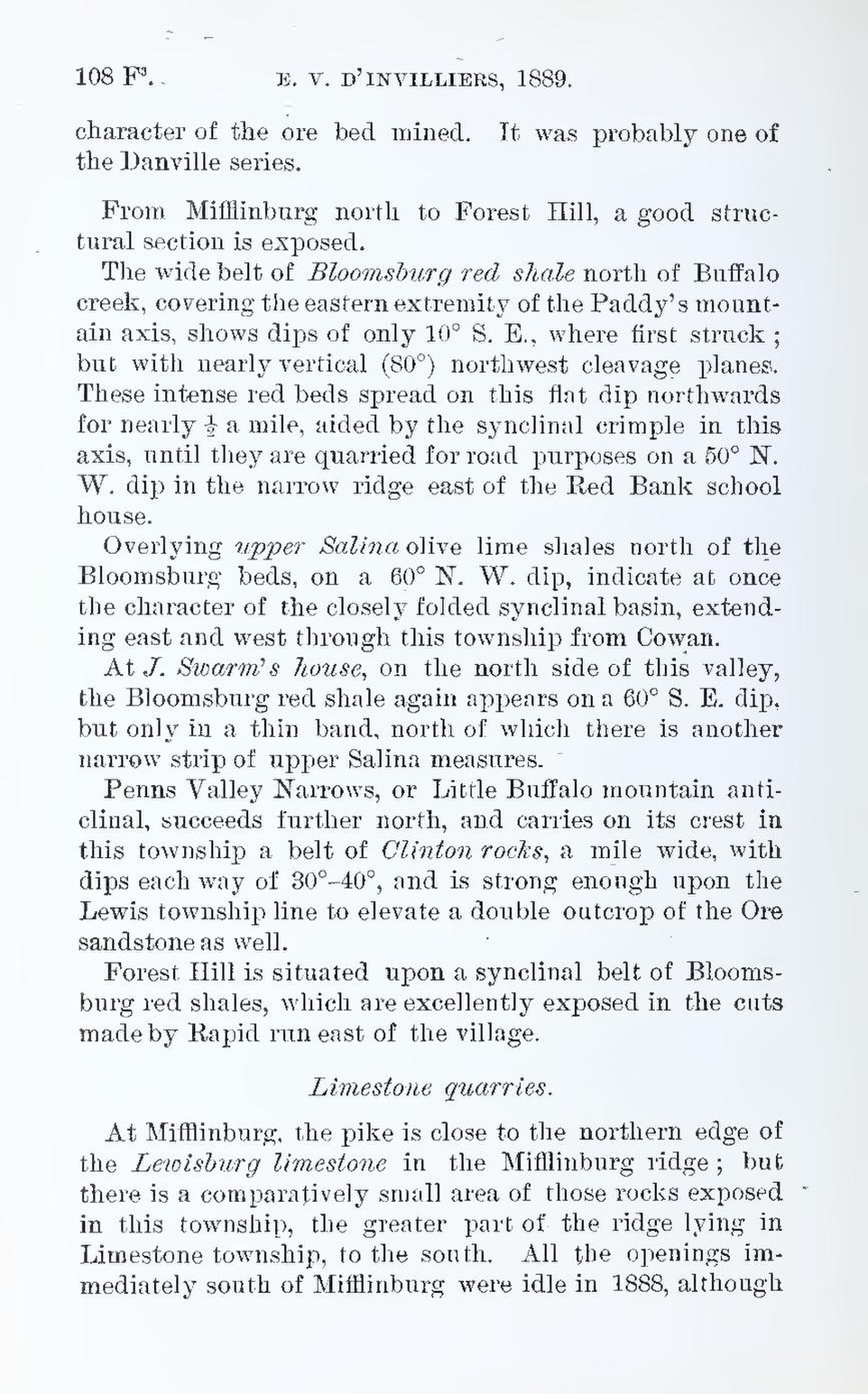character of the ore bed mined. It was probably one of the Danville series.
From Mifflinburg north to Forest Hill, a good struetural section is exposed.
The wide belt of Bloomsburg red shale north of Buffalo creek, covering the eastern extremity of the Paddy’s mountain axis, shows dips of only 10° S. E., where first struck; but with nearly vertical (80°) northwest cleavage planes. These intense red beds spread on this flat dip northwards for nearly ½ a mile, aided by the synclinal crimple in this axis, until they are quarried for road purposes on a 50° N. W. dip in the narrow ridge east of the Red Bank school house,
Overlying upper Salina olive lime shales north of the Bloomsburg beds, on a 60° N. W. dip, indicate at once the character of the closely folded synclinal basin, extending east and west through this township from Cowan.
At J. Swarm’s house, on the north side of this valley, the Bloomsburg red shale again appears on a 60° S. E. dip, but only in a thin band, north of which there is another narrow strip of upper Salina measures.
Penns Valley Narrows, or Little Buffalo mountain anticlinal, succeeds further north, and carries on its crest in this township a belt of Clinton rocks, a mile wide, with dips each way of 30°–40°, and is strong enough upon the Lewis township line to elevate a double outcrop of the Ore sandstone as well.
Forest Hill is situated upon a synclinal belt of Bloomsburg red shales, which are excellently exposed in the cuts made by Rapid run east of the village.
Limestone quarries.
At Mifflinburg, the pike is close to the northern edge of the Lewisburg limestone in the Mifflinburg ridge; but there is a comparatively small area of those rocks exposed in this township, the greater part of the ridge lying in Limestone township, to the south. All the openings immediately south of Mifflinburg were idle in 1888, although
